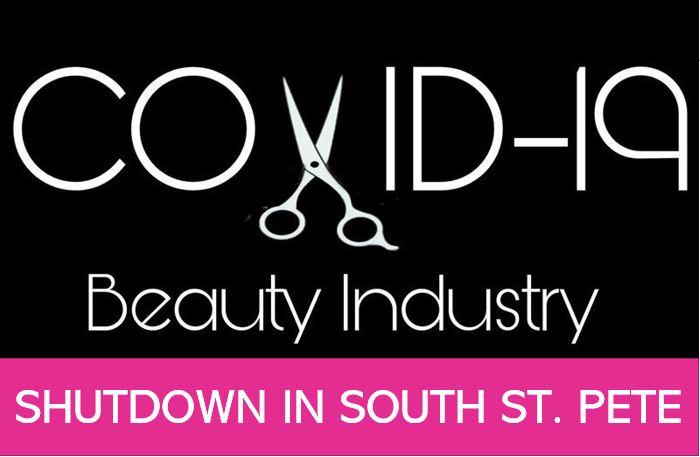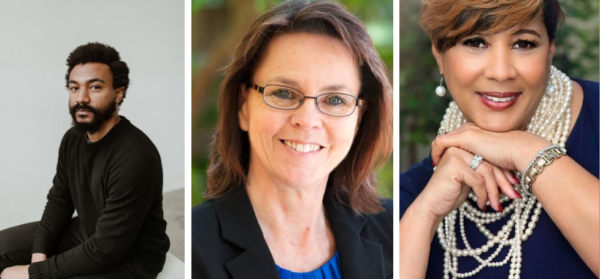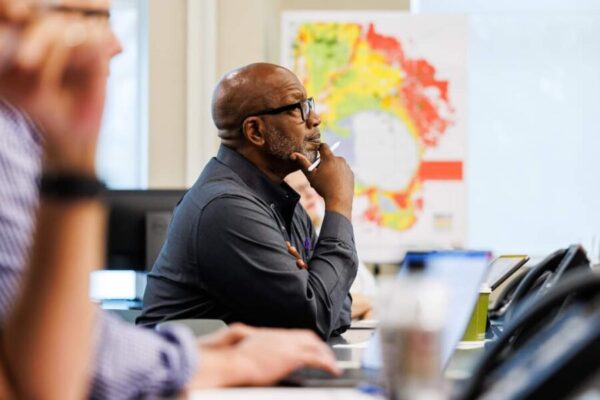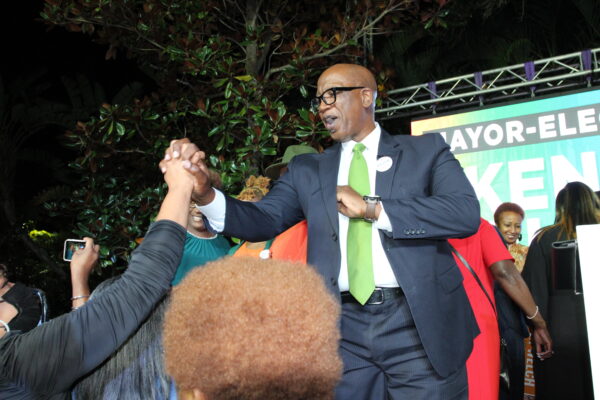News
3 Reasons for the Hype re COVID Shutdowns of Hair Businesses in South St. Petersburg

-Gypsy C. Gallardo for One Community Business Network
Last Thursday, St. Petersburg NAACP President Maria Scruggs issued an email to 40+ community leaders challenging the decision, supposedly made by Pinellas County Commissioners and Sheriff Bob Gualtieri, to shut down businesses that are disproportionately owned by African Americans, as part of the effort to the COVID contagion.
“It appears that Sheriff Gualtiere (sic) has listed every business category supported by or owned by Black people,” Scruggs said of the list of required business shutdowns.
She went on to say that beauty salons and barbershops should be exempt from the shutdown, if barbers and stylists can observe social distancing guidelines or wear masks to limit contact.
It turned out to be a mistaken accusation. The Sheriff said in his reply to Scruggs, “That is incorrect…The Governor, not me, the County Administrator or [County Commissioners] have any say in what is open or closed. The Governor decided that hair salons, nail salons, etc. cannot operate. I actually support them staying open because the business community has demonstrated over the last week that it can operate responsibly and within CDC guidelines.”
Scruggs made a public apology to the Sheriff on Facebook soon after. But she isn’t wrong in lifting up the plight of African American entrepreneurs in the local beauty sector.
Several other African American leaders prioritized this group in their earliest responses to the crisis.
On March 27th, the One Community Plan announced the #PayItForward initiative to make microgrants to hair stylists, barbers and nail techs to help them stay afloat during the downturn.
St. Petersburg Deputy Mayor Dr. Kanika Tomalin immediately said yes to co-funding the project for the same reason that beauty businesses are a target of the new Fighting Chance Fund by the City of St. Petersburg. It names hair salons and barbershops among a short list of business types to be supported by grants. The program is designed to invest is the survival of about 1,000 restaurant, bar, retail and service businesses, in all.
Commissioner Ken Welch has also advocated for support to stylists and barbers. He said in a recent email, “The County acted specifically to allow hair salons, barber shops, and other businesses to continue to operate… if they adhered to social distancing guidelines. We did that despite the fact that many were calling for all businesses to be shut down.”
Even before all of that, folks in the community had already begun slipping a few dollars to their stylists and barbers. As Gloria Campbell said on Facebook, “You don’t need to wait for a program. Cash app your hair dressers/barbers…I’ve been doing it for the last 2 weeks.”
For those who don’t understand all the attention, here are three reasons the beauty sector is so important to the black community economy.
1. Hair care is huge in the black community; an estimated $12.3 million per year is spent on haircare by black St. Petersburg
Hair is big everywhere but it’s BIGGER in the black community, in large part due to black women’s beauty habits.
One of the things black women consistently and universally spend money on is their hair. No matter their income level, hair type, or age, black women’s hair has a budget.
They may get their hair done biweekly by a pro, or invest in a quarterly touchup of natural styles such as locs, twists and braids. They may do it themselves at home or have a cousin with a “side hustle” doing lace weaves. The “how” and “where” varies, but a huge percentage of black women invest in having their hair done.
It’s not just the sisters. Most brothers keep their do tight too. But it’s women and girls who account for the majority of the estimated $12.3 million per year that African Americans in St. Pete spend to maintain their hair.
I don’t know why it’s ingrained in the culture, but it is, and that has at least two big implications during this unprecedented COVID crisis.
One is the emotional strain of the “out-of-sorts” feeling of not having your “do” in order. Of not being able to stop at the shop for a good shampoo or shave, or just to socialize.
And two, more to the point of this article, the shutdown of barbershops and beauty salons is an absolute body blow to the black community economy. Here’s why…
2. The beauty sector is one of the biggest in St. Petersburg’s black economy
African Americans spend over one-and-a-half times more on hair than other Americans (in dollar terms).
For every man, woman and child, black people spend an estimated average $193 per person, per year, versus an average $120 per person for others. This is only an estimate*. A lot of us spend more than that. But it’s an average across the spectrum, including people who buy oil sheen once a month to do their hair at home, and people who spend zero on their hair. Yes, they do exist.
This makes the beauty sector a huge part of St. Petersburg’s black-owned business community. Though hair care spending equates to less than 1% of African Americans’ aggregate income, beauty businesses take-in about of one-twelfth (or 8%) of the revenue to black-owned businesses in St. Petersburg.
Local hair care spending may equal a tiny portion of the revenues of white-owned businesses in St. Petersburg, but the beauty sector accounts for eight out of every hundred dollars spent with black-owned businesses in the city.
3. Black hair entrepreneurs spend a lot of money in the community
Black beauty entrepreneurs “re-circulate the dollar” back into the black community more than any sector where local residents spend their money. Barbershops and beauty salons are two of only three places African Americans routinely spend, where our dollars flow directly back into our communities in high double-digit percentages. The only other place is church.
And it’s the only sector where our spending supports an 80%+ black and brown workforce.
The current shutdown of barbershops and beauty salons threatens a loss of about $2 million in business and self-employment revenue to African Americans over a two-month slowdown followed by shutdown.
This is one reason, as the saying goes about economic recessions, “When white folks get a cold, black folks get pneumonia.” Things will be worse financially for South St. Petersburg during this COVID crisis, for this and many other reasons.
How You Can Help
-
Please considering supporting our beauty community. CashApp or send a contribution to your own stylist, barber or nail tech to help them stay afloat.
-
Contribute to the #PayItForward Campaign by The 2020 Plan/One Community Plan team, which will make microgrants to 20 beauty industry entrepreneurs in South St. Petersburg during the months of April and May. Click here to contribute to The 2020 Fund at Community Foundation of Tampa Bay.








